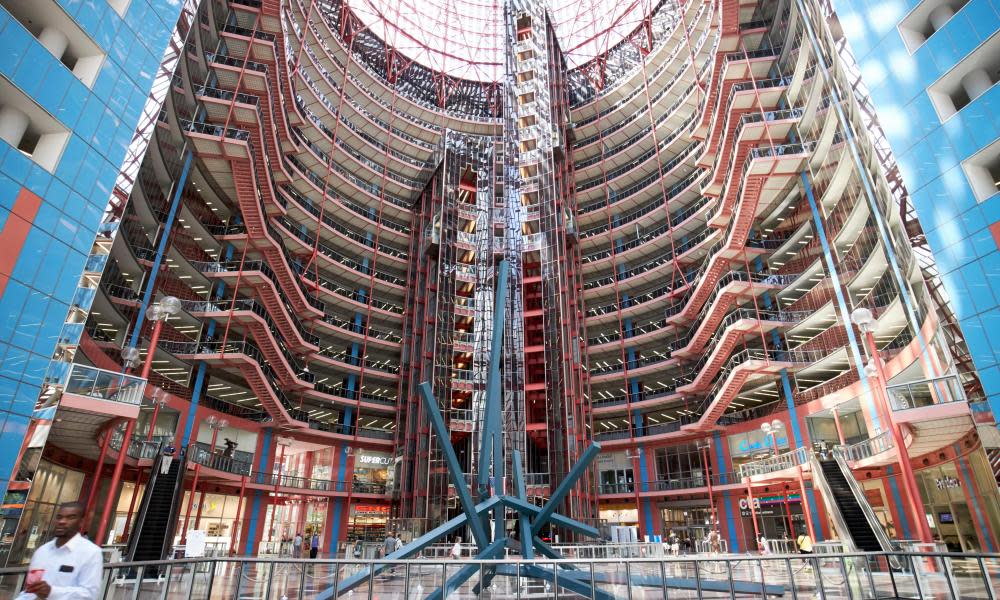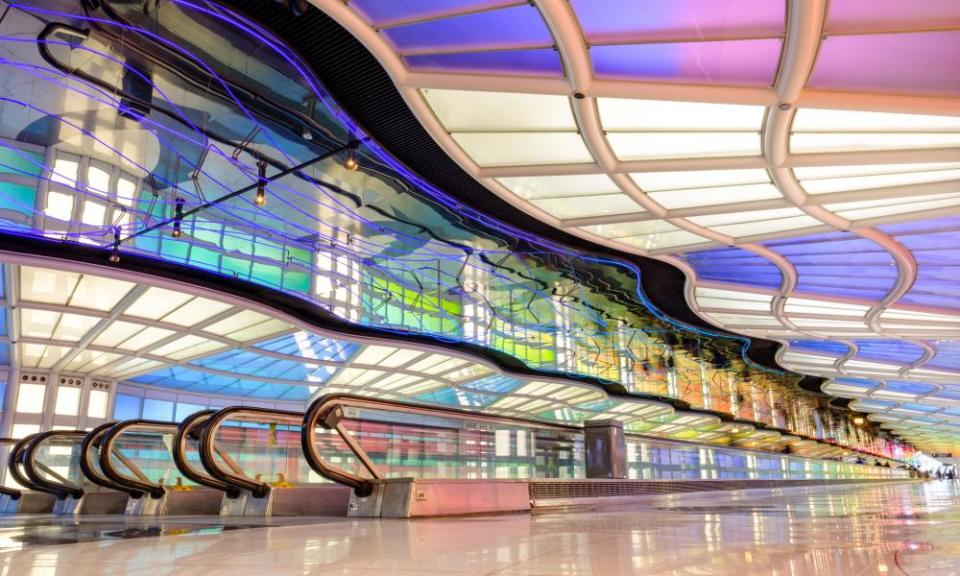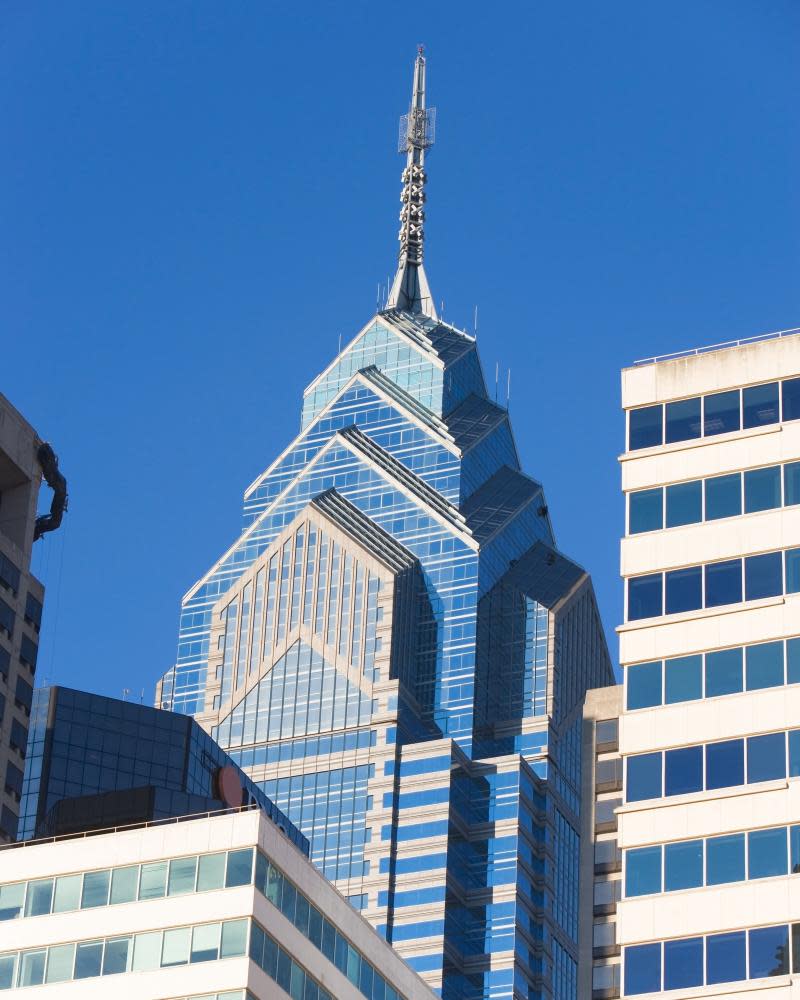Helmut Jahn obituary

Standing on a corner of downtown Chicago as a dazzling rocket ship of mirrored glass and salmon pink steel, the James R Thompson Center, more than any other building, encapsulates the flamboyant oeuvre of the German-American architect Helmut Jahn, who has died aged 81 in a cycling accident.
The glitzy government building, originally known as the State of Illinois Center, is a fitting monument to the larger than life architect, as exuberant as it is divisive.
Related: ‘The Flash Gordon of architecture’: Helmut Jahn’s bombastic marvels – in pictures
The big budget project drew fierce criticism when it was completed in 1985. It was described as “a chunky wedge of little grace or elegance” by the critic of the Chicago Tribune; the colour palette of pink and turquoise reminded the New York Times critic of “cheap commercial buildings of the 1950s, bus stations and suburban schools”. Plagued by practical issues – including an ice-based cooling system that notoriously failed, leading to indoor temperatures of 43C, and falling slabs of granite – it has been a costly trophy for the state to maintain.
But this brash bastion of government services has also proved to be one of the most used indoor public spaces in the city. Conceived as a self-contained world, where you could grab a coffee, buy a suit, visit an art gallery, renew your driver’s licence, attend a concert and catch a train home – without ever going outside – it has served as a lively, one-stop civic mall. The soaring conical atrium remains an exhilarating space to encounter, lined with lifts, staircases and a cat’s cradle of colourful steel bracing, looking like the Pompidou Centre turned inside out.
Despite a growing appreciation among a younger generation, reappraising this maligned period of postmodernism, the building is facing the threat of demolition. Last week it was put up for sale, damned as a drain on state finances. A recent zoning ordinance would pave the way for the site to allow one of the tallest skyscrapers in the city.

It is fair to say that if Jahn were still around, he would be eager to be front of the queue to design it: learning of the site’s possible fate in 2017, he proposed a 110-storey super-tower to sprout from the side of his conical building.
Born near Nuremberg, Helmut was the son of Lena (nee Werth) and Wilhelm, a teacher. He obtained his undergraduate architecture degree at the Technical University of Munich, before moving to Chicago in 1966 to study under the modernist maestro Ludwig Mies van Der Rohe at the Illinois Institute of Technology.
He left without graduating, after refusing to follow the tutors’ briefs, and joined forces with Charles F Murphy in 1967, taking sole control of the practice in 1981, when the firm was renamed Murphy/Jahn (rebranded JAHN in 2012).
Turning away from the hardline modernism of Mies, Jahn developed a bold, bombastic form of corporate postmodernism, designing company headquarters, banks, airports and government buildings across the world that exuded the power-dressing pomp of the 1980s. “I don’t think there’s anything wrong in using a building to connote achievement and a certain commercial power,” he said. “Great statesmen, great emperors, great dictators always build great buildings.”

His skyscraper at One Liberty Place in Philadelphia, completed in 1987, burst through the city’s height limit with a brawny swagger. Its thick shaft is crowned with a cascade of angular chevrons in blue mirrored glass and bands of granite, looking like the body-builder cousin of New York’s elegant Chrysler Building.
In 1988, for the United Airlines terminal at Chicago’s O’Hare airport, he transformed the dull arrival experience with a kaleidoscopic disco tunnel, in collaboration with the Canadian neon artist Michael Hayden, creating one of the most memorable travelator experiences around.
In Berlin, his Sony Centre of the same year evolved some of the civic ideas of his Illinois government building, conceived as an open public forum beneath a billowing fabric umbrella. “I remember when the chairman of Sony viewed the model,” Jahn later recalled. “He said, ‘Mr Jahn, where are the doors?’ I said, ‘There are no doors.’ And he said, ‘But then everybody can come in.’ So, I said, “You got it!’”

Jahn’s style has been described as a kind of romantic high-tech, his buildings often celebrating their structure and inner workings, but always with an additional dramatic flourish. As he put it: “We do not construct decoration, we decorate construction.” He always worked closely with engineers from the very beginning of the design process, particularly with his compatriot Werner Sobek, and described their approach as “archi-neering”. Form, he said, should “follow force, rather than function”.
Always media-savvy and never without a quip, Jahn took his personal image as seriously as his buildings. Fond of Versace suits and fedora hats, which gave him the look of a gangster, he drove Porsche Carreras, owned several racing yachts, and always drew with a Montblanc fountain pen. Nicknamed Flash Gordon, he even appeared on the cover of GQ magazine in 1985, which called him “controversial, abrasive, handsome, young, fanatical, quite serious and, these days, very very hot”.
By the late 2000s, Jahn’s popularity had waned. He became to be seen as something of a dinosaur, associated with the excesses of the previous decades. In a 2018 interview, he complained of clients being too risk-averse, with most work being given to faceless global conglomerates.
His practice had dwindled to a third of the size that it was at its peak. Criticising the attitude of big tech companies, he complained about their loss of any sense of style. “They are no longer concerned with their image,” he said. “In the past these people would wear stylish suits and now they run around in T-shirts.”
He is survived by his wife, Deborah Lampe, their son, Evan, two granddaughters, and a brother, Otmar.
• Helmut Jahn, architect, born 4 January 1940; died 8 May 2021

 Yahoo Movies
Yahoo Movies 
